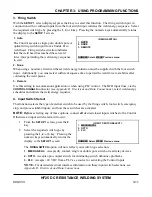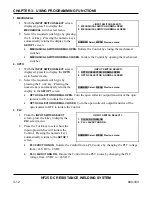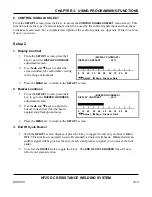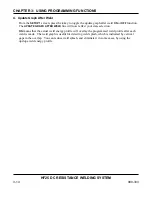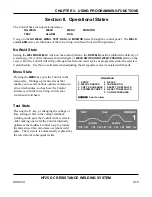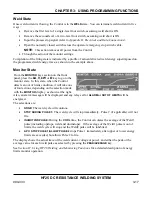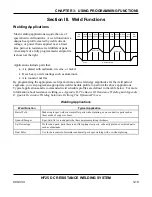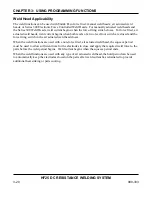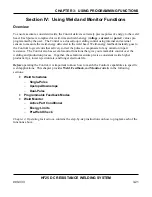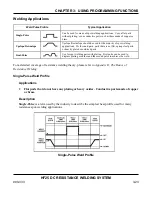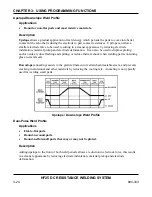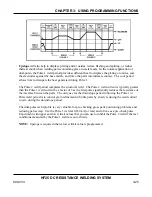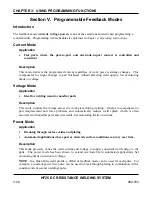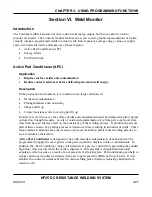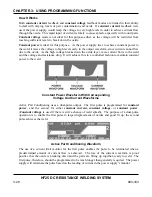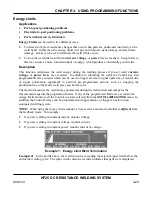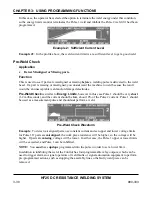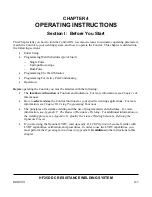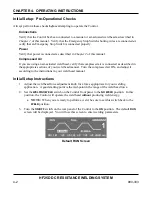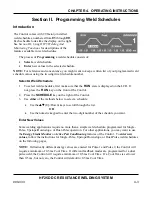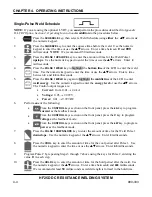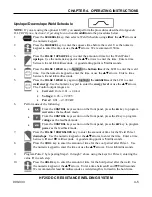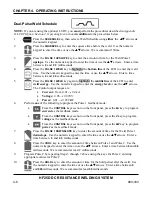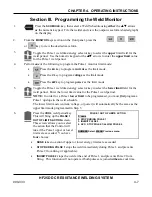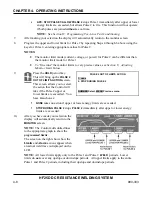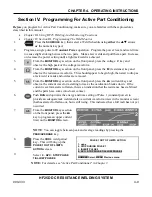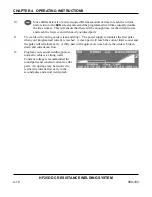
CHAPTER 3: USING PROGRAMMING FUNCTIONS
HF25 DC RESISTANCE WELDING SYSTEM
990-333
3-25
Upslope
will also help to displace plating and/or oxides, reduce flashing and spitting, or reduce
thermal shock when welding parts containing glass-to-metal seals. In the normal application of
dual-pulse, the Pulse 1 weld period provides sufficient heat to displace the plating or oxides, seat
the electrodes against the base metals, and force the parts into intimate contact. The cool period
allows time to dissipate the heat generated during Pulse 1.
The Pulse 2 weld period completes the structural weld. The Pulse 2 weld current is typically greater
than the Pulse 1 weld current by a factor of 3 as the first pulse significantly reduces the resistance of
the interface between the parts. The only use for the downslope period following the Pulse 1 or
Pulse weld period is to control grain refinement in brittle parts by slowly reducing the weld current
to zero during the downslope period.
The dual-pulse weld profile is very valuable for pre-checking gross parts positioning problems and
reducing parts scrap. Use the Pulse 1 weld at 0.050 kA [or less] and 2.0 ms as a pre-check pulse.
Experiment with upper and lower limit values that you can use to inhibit the Pulse 2 weld if the test
conditions measured by the Pulse 1 weld are out of limits.
NOTE:
Upslope is required when a lower limit value is programmed.
Summary of Contents for HF25A
Page 9: ...HF25D DC RESISTANCE WELDING SYSTEM 990 333 ix ...
Page 10: ......
Page 20: ......
Page 84: ...CHAPTER 6 CALIBRATION HF25D DC RESISTANCE WELDING SYSTEM 990 333 6 4 Final Calibration Setup ...
Page 113: ......
Page 129: ......
Page 153: ......
Page 171: ......

